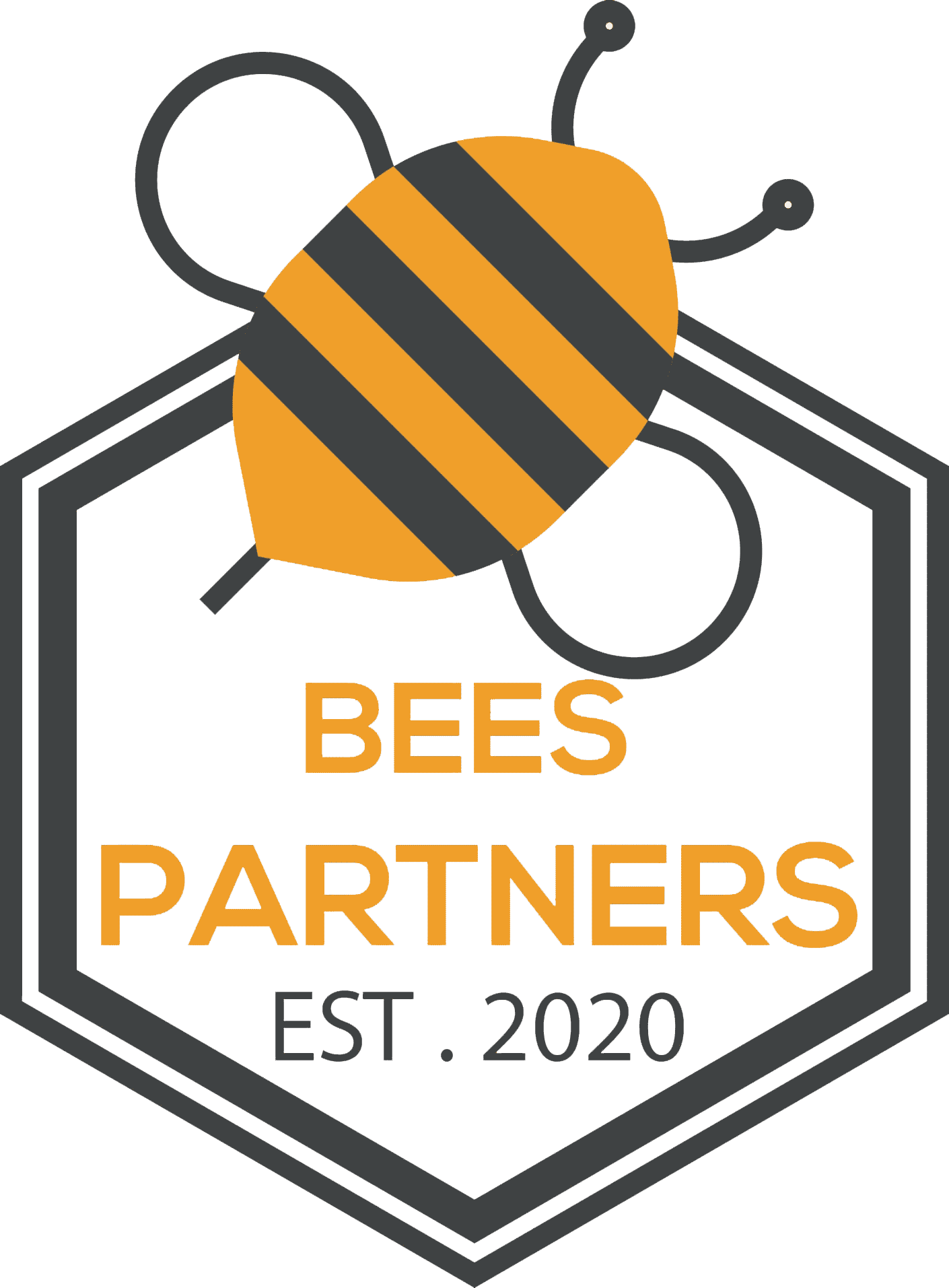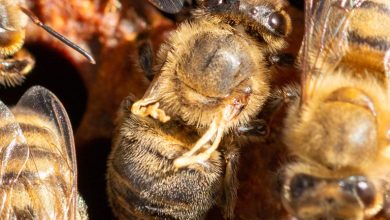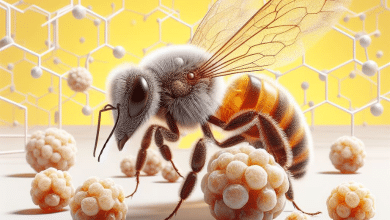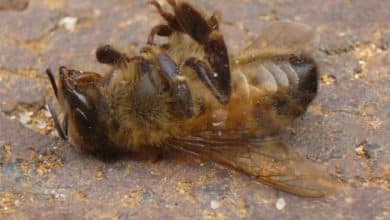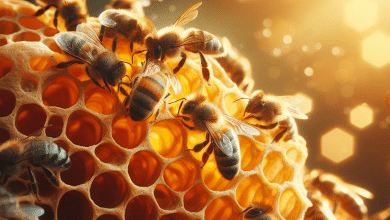Advanced Beekeeping Techniques for Disease Control and Hive Health

Advanced Beekeeping Techniques require not only technical skills but also a commitment to lifelong learning about bee biology, behavior, and health.
Importance of Disease Control
One of the cornerstones of successful advanced beekeeping is disease control. An astute beekeeper must always be vigilant about potential threats, especially diseases that could devastate a colony. For instance:
- Varroa Mites: These pesky parasites weakens colonies and can lead to significant losses if not managed effectively.
- Foulbrood Diseases: American and European foulbrood can wipe out entire colonies if not timely addressed.
By consistently monitoring hive health and taking preventive measures, beekeepers can protect their colonies, ensuring they thrive.
Significance of Hive Health
Healthy hives are the foundation of productive beekeeping. The well-being of a bee colony impacts everything from honey yield to pollination success. Here’s why hive health is paramount:
- Nutritional Needs: Bees require a balanced diet to fend off diseases. Supplementing feed during scarce seasons is essential.
- Genetic Diversity: Maintaining diverse genetics wards off diseases more effectively.
A personal anecdote illustrates this: after recognizing fluctuating hive performance, a fellow beekeeper introduced better nutrition practices and varied stock strains.
The transformation in both honey production and colony resilience was remarkable, highlighting the direct correlation between hive health and effective management strategies. By prioritizing disease control and overall hive health, beekeepers can elevate their practices to advanced levels, fostering stronger, more sustainable colonies.
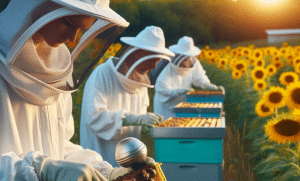
Contents
- 1 Understanding Common Bee Diseases
- 2 Advanced Hive Management Strategies
- 3 Medications and Treatments for Bee Diseases
- 4 Beekeeping Equipment for Disease Prevention
- 5 Hygienic Bee Breeds and Genetics
- 6 Environmental Factors Affecting Hive Health
- 7 Best Practices for Hive Sanitation
- 8 Alternative Therapies for Bee Health
- 9 Monitoring and Disease Surveillance
- 10 Beekeeper Education and Training Programs
- 11 Collaborations with Veterinarians and Experts
- 12 Case Studies of Successful Disease Control Strategies
- 13 Implementing Sustainable Practices in Beekeeping
- 14 What is the Modern Beekeeping Method?
- 15 What is the Most Profitable Part of Beekeeping?
- 16 What is the Hardest Part of Beekeeping?
- 17 What is the API Culture Method?
Understanding Common Bee Diseases
As beekeepers strive for healthy and productive colonies, understanding common diseases becomes crucial. With knowledge of these diseases, beekeepers can act proactively to safeguard their bees.
Varroosis and Varroa Mites
One of the most significant threats to honey bee health is Varroosis, caused by the Varroa destructor mite. These tiny vampires can wreak havoc within a hive. Key symptoms to watch out for include:
- Presence of Adult Mites: Visible on bees or within the brood.
- Deformed Wings: Bees with shortened or malformed wings indicate possible infestation.
- Spotty Brood Patterns: An uneven distribution of brood signifies weakened colonies.
Personal experience shows that implementing strategies like drone-brood trapping significantly reduced mite populations in my hives. It’s essential to monitor mite levels regularly, typically using methods like sugar shakes or alcohol washes. If levels exceed 2-3 mites per 100 adult bees, treatment is immediately warranted.
American Foulbrood and European Foulbrood
Another pressing concern is the bacterial diseases American Foulbrood (AFB) and European Foulbrood (EFB). These diseases are not only contagious but also lead to severe colony losses.
- AFB Symptoms: Look for discolored brood, a foul smell, and ropy remains when pupae are extracted.
- EFB Symptoms: This manifests in younger larvae with softer, rubbery remains and is often associated with stress.
In my early beekeeping days, an AFB diagnosis prompted swift action burning all infected frames was necessary to prevent further spread. Maintaining strong colonies and practicing good hive management can mitigate these diseases, reinforcing the importance of vigilance in beekeeping.
By fostering awareness and preventative strategies, beekeepers can ensure healthier hives for better productivity and sustainability.

Advanced Hive Management Strategies
To thrive in the changing landscape of beekeeping, employing advanced hive management strategies is crucial. Two such strategies that stand out are Integrated Pest Management (IPM) and queen rearing techniques. These methods not only improve hive health but also enhance overall productivity.
Integrated Pest Management (IPM)
Integrated Pest Management (IPM) focuses on controlling pests in an environmentally friendly and sustainable manner. It incorporates regular monitoring as part of the strategy, allowing beekeepers to detect issues early. Here are some key steps:
- Regular Monitoring: Use techniques like sugar rolls or alcohol washes to keep tabs on Varroa mite populations.
- Biotechnical Methods: Implement practices like drone brood removal to trap mites effectively.
- Judicious Treatments: When necessary, apply organic acids or thymol-based treatments following label instructions to maintain bee health.
In my own experience, adopting IPM has significantly reduced my hive losses by allowing timely interventions.
Queen Rearing Techniques
Another essential component of advanced hive management is queen rearing. A healthy, well-mated queen is vital for colony strength. Effective techniques include:
- Doolittle and Jenter Methods: These methods facilitate controlled breeding, enabling beekeepers to select for desirable traits such as disease resistance and honey production.
- Grafting: This technique allows beekeepers to produce new queens by taking young larvae from the best-performing colonies.
By focusing on queen management, beekeepers can enhance their colonies’ resilience and productivity. Overall, combining IPM with effective queen rearing can transform a beekeeper’s operations, leading to robust, healthy hives that contribute positively to the ecosystem.

Medications and Treatments for Bee Diseases
Managing bee diseases requires not only vigilance and proper sanitation but also an understanding of the right treatments. There are both organic and chemical-free options available for beekeepers looking to maintain the health of their colonies while minimizing chemical residues.
Organic and Chemical-Free Options
Organic treatments have gained popularity among beekeepers who prefer to avoid synthetic chemicals. Some effective options include:
- Essential Oils: Ingredients like thyme or mint can be used as natural miticides. For instance, thymol has shown efficacy against Varroa mites and is often preferred for its minimal impact on bees and the environment.
- Sugaring Treatments: The use of powdered sugar can help dislodge mites from bees, making it a simple yet effective option.
- Biotechnical Methods: Techniques such as drone brood trapping can manage Varroa populations without chemicals, as these traps target the mites during their breeding cycle.
In my own experience, replacing chemical treatments with organic methods has significantly improved my hive health while keeping contamination at bay.
Antibiotics and their Application
While organic options are favored, there are circumstances where antibiotics remain necessary, particularly for treating serious bacterial infections like American foulbrood (AFB). Here are some critical points regarding antibiotic use:
- Common Antibiotics: Terramycin and Oxytetracycline are widely used to control AFB. However, indiscriminate use can lead to resistant strains that complicate future treatments.
- Regulations and Protocols: Always ensure compliance with local regulations regarding antibiotic use in beekeeping. This may include requiring a veterinarian’s prescription for purchase.
It’s essential to use antibiotics only as a last resort and to incorporate best practices such as preventing disease spread through proper hive management.
By carefully weighing treatment options, beekeepers can better protect their hives while promoting sustainability within their practices.

Beekeeping Equipment for Disease Prevention
Effective disease management in beekeeping doesn’t just hinge on treatments; having the right equipment plays an essential role in prevention. By investing in quality tools and maintaining hygiene practices, beekeepers can significantly enhance their colonies’ health and resilience.
Hive Inspections Tools
Regular hive inspections are key to early detection of diseases and pests. Essential tools to optimize these inspections include:
- Hive Tool: A must-have for prying apart hive boxes and scraping off propolis and debris. I found that keeping this tool in top condition makes inspections smoother.
- Bee Brush: This helps gently remove bees from frames, ensuring minimal disruption during inspections.
- Smoker: To calm bees, a well-functioning smoker is vital. It allows beekeepers to work with their hives safely.
- Mite Monitoring Tools: Sticky boards, alcohol wash kits, and sugar rolls should be part of your arsenal to check for Varroa mite populations effectively.
In my experience, using these tools efficiently has saved time and reduced stress—in both the bees and myself.
Protective Gear and Hygiene Practices
Wearing proper protective gear is paramount in maintaining bee health while ensuring personal safety. Key equipment includes:
- Bee Suit and Veil: A quality bee suit protects against stings, while a veil ensures visibility without compromising safety.
- Gloves: Nitrile gloves minimize contamination and provide a barrier between you and potential diseases.
Additionally, practicing strict hygiene is crucial. Some best practices include:
- Sanitizing Tools: Regularly disinfect tools between hive inspections to prevent cross-contamination.
- Washing Hands: Always wash your hands before and after working with beehives.
Maintaining equipment, proper gear, and hygiene practices establishes a strong foundation for a successful beekeeping operation, not only protecting the beekeeper but also promoting a healthier environment for the bees.
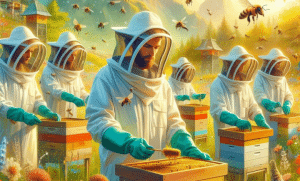
Hygienic Bee Breeds and Genetics
In the world of beekeeping, enhancing colony health through genetics is crucial. Selecting for hygienic behavior and maintaining genetic diversity is an effective strategy for creating resilient bee populations, which helps in combating diseases and pests.
Breeding Resistant Bee Colonies
Breeding bee colonies that exhibit resistance to common threats, such as Varroa mites and diseases like American foulbrood, is essential for sustainable beekeeping. Some effective approaches include:
- Hygienic Behavior: Selecting bees that can detect and remove diseased or dead brood has been a successful strategy. For instance, the Minnesota Hygienic bees have proven resilient due to their remarkable ability to eliminate infected larvae.
- Varroa Sensitive Hygiene (VSH): This involves the removal of infested pupae while leaving non-reproductive mites in the colony. By focusing on these traits, beekeepers can significantly reduce the need for chemical treatments, resulting in healthier colonies.
In my experience, investing time in breeding programs that emphasize these traits has led to noticeable improvements in hive health.
Importance of Genetic Diversity
Genetic diversity plays a pivotal role in the overall resilience of honey bee colonies. Here are key points on why it matters:
- Disease Resistance: Colonies with a greater genetic pool tend to exhibit improved resistance to diseases and pests. This has been demonstrated in studies showing higher survival rates among genetically diverse colonies.
- Strength and Adaptability: A diverse gene pool allows colonies to adapt to varying environmental conditions, ensuring stability and productivity.
By fostering genetic diversity through breeding programs and careful selection, beekeepers can cultivate robust populations. It’s a journey that not only enhances the health of individual colonies but also supports the greater ecosystem, making it a rewarding endeavor for beekeepers committed to sustainability.
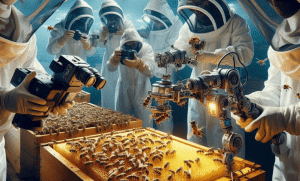
Environmental Factors Affecting Hive Health
The vitality of honey bee colonies is intricately linked to their environment. Among the myriad challenges they face, pesticide exposure and the impacts of climate change stand out as significant threats to hive health.
Pesticide Exposure
Pesticides can have devastating effects on honey bee populations. Certain chemicals, while designed to protect crops, pose unintended risks to honey bees. Here are critical aspects to consider:
- Toxicity: Chemicals like neonicotinoids have been shown to affect bee navigation and immune systems. It’s essential for beekeepers to understand the pesticide profiles of nearby agricultural practices.
- Bioaccumulation: Pesticides can accumulate in beeswax, leading to long-term exposure effects. Regular monitoring can help mitigate these risks.
In my experience, proactive communication with local farmers about their spray schedules has helped minimize bee exposure during active foraging times.
Climate Change Impacts
Climate change presents another challenge, altering habitats and forage availability for honey bees. Key impacts include:
- Floral Decrease: Shifts in blooming schedules can lead to mismatches between bee activity and available forage, straining food resources during critical seasons.
- Increased Stress: Extreme weather events, such as unexpected heatwaves or heavy rains, can disrupt bee foraging patterns and hive dynamics.
Beekeepers need to adapt by diversifying forage options and ensuring hives are placed in optimal locations. By staying informed about these environmental factors, beekeepers can better manage their colonies’ health, ultimately promoting resilience amid changing conditions.
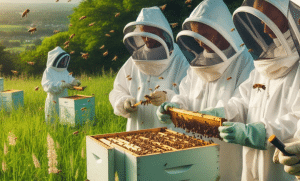
Best Practices for Hive Sanitation
Maintaining hive sanitation is critical for ensuring the health and productivity of honey bee colonies. By implementing effective cleaning and waste management techniques, beekeepers can significantly reduce the risk of pests and diseases.
Cleaning and Sterilization Techniques
Regular cleaning and sterilization of hive equipment can prevent the spread of diseases among colonies. Here are some effective strategies:
- Disinfecting Tools: Before working with multiple hives, disinfect tools like hive tools and smokers to avoid cross-contamination. A simple solution of bleach and water or alcohol can do wonders.
- Cleaning Combs and Frames: Remove old wax and debris from frames regularly. Sometimes, freezing combs for a few days can eliminate pests like wax moths and can also sanitize them.
- Boiling Water Sterilization: For equipment that can withstand high temperatures, using boiling water to sterilize can be an effective method. It ensures that pathogens are eliminated before use.
I’ve found that these practices became a routine, making my inspections smoother and my hives healthier over time.
Proper Waste Management
Waste management in beekeeping involves more than just cleaning tools; it includes how you handle dead bees, old combs, and other waste materials:
- Disposing of Dead Bees: Collect and dispose of dead bees promptly. Leaving them in the hive can attract pests and signify underlying health issues.
- Old Comb Management: Replace some combs annually to minimize the accumulation of chemicals and pests. Old comb can harbor diseases; consider rendering wax or composting comb that can no longer be used.
Practicing diligent hygiene and waste management minimizes health risks in hives and fosters a productive, resilient bee population.

Alternative Therapies for Bee Health
In the quest for healthier and more resilient bee colonies, many beekeepers are turning to alternative therapies. Essential oils and natural remedies are gaining traction as effective means to support bee health and strength without relying solely on synthetic treatments.
Essential Oil Treatments
Essential oils are becoming increasingly popular in beekeeping for their ability to deter pests and promote overall bee health. Some favored oils include:
- Thyme Oil: Known for its antimicrobial properties, thyme oil can help ward off pathogens affecting the hive.
- Peppermint Oil: This oil not only aids in the reduction of Varroa mite populations but also provides a refreshing scent to the hive.
- Tea Tree Oil: Effective against fungal infections, tea tree oil can be integrated into your management routine.
In my experience, introducing a few drops of essential oil in the smoker has calmed the bees and created a pleasant working atmosphere.
Natural Remedies for Colony Strength
Maintaining a robust colony is paramount, and several natural remedies can bolster hive strength:
- Propolis: This natural resin, collected by bees, is known for its antiseptic properties. Encouraging bees to produce and use propolis can enhance overall hive resilience.
- Pollen Supplements: During periods of limited forage, using protein-rich pollen substitutes can provide crucial nutrition, supporting brood development and immunity.
- Sugar Syrup with Vinegar: Mixing sugar syrup with a bit of apple cider vinegar can boost bees’ energy levels while helping to maintain their digestive health.
Implementing these alternative therapies has not only helped enhance the well-being of my hives but also encouraged a more organic approach to beekeeping. By exploring these methods, beekeepers can create healthier environments while reducing dependence on chemicals, ultimately benefiting bees and the ecosystem.
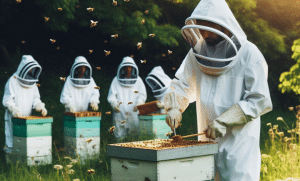
Monitoring and Disease Surveillance
For beekeepers, effective monitoring and disease surveillance are pivotal in maintaining healthy colonies. With various threats to bee health, incorporating regular assessments and early detection methods can significantly improve hive management.
Regular Hive Assessments
Conducting regular hive assessments is crucial to ensure that your bees are thriving. Here’s how to make these inspections effective:
- Establish a Routine: Inspect hives at least every 2-3 months. More frequent checks during peak activity seasons are essential.
- Assess Colony Strength: Evaluate the population and look for signs of a healthy brood pattern. A queen that is laying eggs consistently indicates a robust colony.
- Monitor Honey Stores: Check for adequate honey reserves to ensure that bees won’t starve, especially before winter.
From my personal experience, maintaining a consistent inspection schedule has been instrumental in catching issues before they escalate.
Early Detection Methods
Early detection of pests and diseases can save colonies from significant losses. Here are effective methods:
- Visual Inspections: Look for signs of diseases like American foulbrood or European foulbrood during inspections for discolored or disorganized brood.
- Varroa Monitoring: Using sticky boards or performing alcohol washes can provide accurate assessments of Varroa mite populations.
- Nosema Testing: Regularly check for Nosema spores through microscopic examination of bee guts.
By implementing these early detection strategies, I’ve been able to respond swiftly to problems, ensuring my colonies remain healthy and productive. This proactive approach not only supports hive health but contributes to the overall sustainability of our important pollinators.
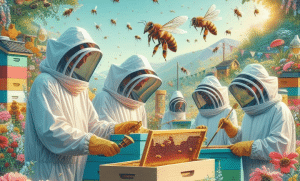
Beekeeper Education and Training Programs
Investing in education is vital for both novice and experienced beekeepers wishing to enhance their skills and knowledge. Participating in workshops and certification courses can provide essential insights into best practices and new techniques in beekeeping.
Workshops and Seminars
Workshops and seminars offer a fantastic opportunity for beekeepers to learn from experts while engaging in hands-on experiences. These sessions often cover a range of topics, such as:
- Pest and Disease Management: Learn to identify and treat common hive issues like Varroa mites and American foulbrood.
- Queen Rearing: Understand the processes involved in developing new queens and maintaining hive structure.
- Nutritional Needs: Gain insights into proper nutrition for bees to boost hive health and productivity.
I remember attending a local beekeeping workshop where I gained invaluable techniques for mite control that I immediately implemented in my own apiary, resulting in noticeably healthier colonies.
Certification Courses
For those seeking formal recognition in beekeeping, certification courses are an excellent option. These structured programs often include:
- Comprehensive Curriculum: Courses usually offer in-depth learning about bee biology, management practices, and hive construction.
- Hands-on Training: Participants get firsthand experience with bee handling and hive inspections.
For instance, the Advanced Beekeeping course I completed not only solidified my understanding of colony management but also provided essential skills in disease prevention and treatment. Certification can elevate a beekeeper’s credibility,
paving the way for enhanced opportunities and a deeper connection to the beekeeping community. Through continuous education and commitment to practice, beekeepers can foster healthier colonies and contribute positively to the ecosystem.
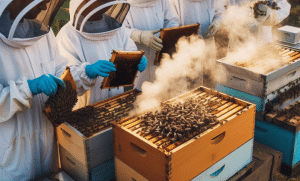
Collaborations with Veterinarians and Experts
As beekeeping practices evolve, collaborating with veterinarians and experts in the field is becoming increasingly essential. This partnership can provide beekeepers with invaluable insights and resources to enhance the health and productivity of their hives.
Seeking Professional Guidance
Veterinarians play a crucial role in promoting bee health, particularly in diagnosing and treating illnesses. Here are some ways to benefit from their expertise:
- Health Assessments: Engaging with veterinarians for regular hive inspections can help identify potential issues before they escalate.
- Pest Control Recommendations: Veterinarians can offer tailored advice on managing pests like Varroa mites, ensuring treatment plans are both effective and safe.
In my experience, consulting a local veterinarian led to significant improvements in my management strategy, especially concerning disease prevention.
Research Partnerships
Forming research partnerships can also pave the way for better beekeeping practices:
- Collaborative Studies: Partnering with universities and institutions facilitates research on bee health, nutrition, and breeding practices, allowing for the development of science-backed techniques.
- Access to Resources: Academic collaborations often provide access to advanced diagnostic services and cutting-edge technology that can enhance hive monitoring.
By integrating research findings into everyday practices, beekeepers can improve overall colony health and sustainability. As I’ve discovered, working together with experts not only strengthens my operation but also contributes to the broader efforts in supporting bee populations.
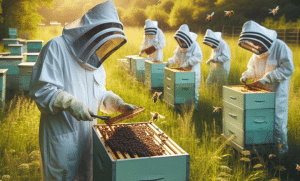
Case Studies of Successful Disease Control Strategies
Understanding what works in disease management can significantly enhance beekeeper practices. Through various case studies, we can learn from real-life examples and gather valuable insights that can be applied to our own operations.
Real-life Examples
One notable success comes from a beekeeper in the Midwest who faced persistent Varroa mite infestations. After implementing an Integrated Pest Management (IPM) approach that included:
- Drone Brood Removal: By specifically trapping and removing drone larvae, this beekeeper effectively reduced the mite population significantly.
- Regular Monitoring: Every month, the beekeeper used sticky boards to assess mite levels, which allowed for timely intervention.
As a result, this operation saw a substantial improvement in colony strength and honey production.
Lessons Learned
From these success stories, several lessons emerge that can guide all beekeepers:
- Proactive Monitoring is Key: Regular checks empower beekeepers to detect issues early, before they spiral out of control.
- Combining Methods: Using a blend of biological, cultural, and chemical approaches maximizes effectiveness and reduces resistance development.
- Community Involvement: Collaborative efforts with neighboring beekeepers help maintain low pest levels across the region.
In my own journey, incorporating lessons from fellow beekeepers transformed my approach to managing mite populations, leading to healthier hives and better yields.
By sharing experiences, beekeepers can innovate and elevate practices within the community, ultimately benefiting all involved in this vital endeavor.

Implementing Sustainable Practices in Beekeeping
As the importance of bees in agriculture and ecosystem health gains recognition, implementing sustainable practices in beekeeping has become essential.
By adhering to organic standards and embracing eco-friendly approaches, beekeepers can contribute positively to the environment while ensuring colony health.
Organic Beekeeping Standards
Organic beekeeping focuses on minimizing synthetic chemicals and promoting natural methods. Key practices include:
- Natural Hive Treatments: Using essential oils and other natural remedies for pest control, rather than synthetic pesticides.
- Sourcing Organic Feed: Providing bees with organic sugar syrup and pollen substitutes to ensure their nutrition is free from harmful residues.
- Comb Management: Replacing old combs regularly to avoid chemical buildup, a practice I’ve found crucial for maintaining hive health.
In my early beekeeping days, I decided to transition to organic practices, and the difference in honey quality was remarkable, not to mention the positive impact on my local ecosystem.
Eco-Friendly Approaches
Adopting eco-friendly practices further enhances sustainability. This can involve:
- Pollinator-Friendly Floral Planting: Encouraging biodiversity by planting flowers that provide bees nectar and pollen, maintaining an abundant food source throughout the season.
- Water Management: Providing accessible clean water sources for bees can reduce stress and improve overall health.
These sustainable practices not only support the health of bee colonies but also enrich the surrounding environment, fostering a balance that benefits both beekeepers and the ecosystem. Embracing such methods helps ensure the longevity of beekeeping as a critical component of agriculture.
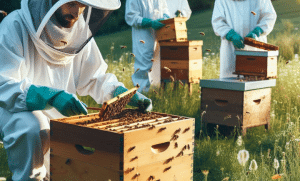
As we wrap up our exploration of beekeeping practices, it’s clear that the health and sustainability of honeybee populations are more critical than ever. During my years beekeeping, I’ve seen firsthand how implementing good management practices can positively influence hive health.
Summary of Key Points
In this guide, we covered several key areas essential for modern beekeeping, including:
- Pest and Disease Management: Understanding how to identify and treat common threats like Varroa mites and Nosema.
- Nutritional Needs: The importance of maintaining a well-nourished colony to withstand diseases.
- Sustainable Practices: Embracing organic beekeeping standards and eco-friendly approaches benefits both the bees and the environment.
- Education & Training: Ongoing education through workshops and certification courses plays a vital role in enhancing beekeeper skills.
Reflecting on my experiences, these principles have significantly shaped my approach to beekeeping.
Trends in Sustainable Beekeeping
Moving forward, we can expect to see more focus on sustainable practices, including precision beekeeping technologies that leverage data for better hive management.
As beekeepers increasingly embrace eco-friendly solutions and organic standards, we can anticipate a shift toward practices that prioritize bee health and environmental preservation.
Collaboration between beekeepers and experts, combined with research backed innovations, will further enhance the future of beekeeping, ensuring a more resilient and productive apicultural community. Engaging in these practices will not only aid in boosting honey production but also support the crucial role of bees in our ecosystems.
What is the Modern Beekeeping Method?
Modern beekeeping has evolved significantly, blending traditional practices with cutting-edge technology. As I started my journey in beekeeping, I quickly realized how much the field has advanced with innovative tools and approaches.
Adopting Advanced Technologies
Today, beekeepers utilize various technologies to improve hive management and ensure the health of their colonies. Some of the modern methods include:
- Hive Monitoring Systems: Devices that monitor hive temperature, humidity, and weight help beekeepers keep an eye on their bees without disturbing them too much. For instance, sensors connected to a smartphone app can alert you if your hive is experiencing stress or if the bees are swarming.
- Thermosolar Hives: These hives use solar energy to regulate temperature, effectively protecting against pests like Varroa mites without relying on chemicals.
- Cloud-Based Record Keeping: Platforms like HiveTracks enable beekeepers to track hive health, population changes, and honey production efficiently. This makes it easier to manage multiple hives and streamline operations.
Integrating Sustainable Practices
In addition to technology, modern beekeeping often emphasizes sustainable practices. This includes organic beekeeping standards and eco-friendly approaches, ensuring the bees thrive in a healthy environment.
Establishing a diverse floral habitat helps improve nutrition and boosts hive resilience against diseases. As we look to the future, balancing tradition with innovation will be key to successful and sustainable beekeeping.
What is the Most Profitable Part of Beekeeping?
As I dove into the world of beekeeping, one question that frequently buzzed in my mind was, “What truly makes beekeeping profitable?” With a range of opportunities available, understanding the most lucrative aspects can help new beekeepers focus their energy effectively.
Honey Production
For many, the first thought about beekeeping is honey production. Extracted liquid honey is the primary product, and it can be quite profitable, especially when managed properly. Here are some key points:
- Quantity: The average yield per hive can vary, but well-managed colonies can produce between 50 to 100 pounds of honey annually.
- Market Demand: Honey has a consistent and growing demand, which often allows beekeepers to command a higher price for quality products.
- Diversification: Beekeepers can produce various types of honey, such as wildflower, clover, or specialty honey (like lavender), each fetched at different prices, broadening market reach.
Other Hive Products
While honey leads the profit chart, other hive products contribute significantly:
- Beeswax: Used in cosmetics and candles, beeswax is a valuable resource and can command a good price.
- Propolis: With its medicinal properties, propolis can be sold as extract or in supplement form.
- Royal Jelly & Pollen: Both have health benefits and can be marketed effectively.
By diversifying their offerings and actively engaging with local markets, beekeepers can significantly enhance their profitability, making every aspect of beekeeping a sweet venture!
What is the Hardest Part of Beekeeping?
As any seasoned beekeeper will tell you, the journey of managing a hive comes with its share of challenges. Reflecting on my own experiences and listening to fellow beekeepers, I’ve discovered several tough aspects that often leave us pondering how to navigate them effectively.
Anticipating Problems
One of the hardest parts of beekeeping is anticipating potential issues before they arise. For instance, during the warm season, you might assume that your bees are thriving.
However, the phenomenon known as summer dearth can leave your bees starving, even when surrounding flowers bloom. That sudden drop in nectar availability can lead to starvation if not prepared for.
- Mite Management: Varroa mites are another silent threat. Late summer assessments are crucial; failing to monitor these tiny parasites can lead to devastating colony losses.
Uncontrollable Factors
Another aspect to consider is that there are numerous factors outside our control:
- Pesticide Exposure: Neighbors’ agricultural practices may inadvertently harm your hive, leaving you helpless.
- Queen Issues: The failure of a queen, often occurring when you least expect it, can create significant challenges in maintaining colony strength.
Ultimately, the hardest parts of beekeeping often revolve around understanding the threats that loom above your bees, alongside the humbling realization that some challenges are simply beyond your control. Staying informed and connected with a community of beekeepers helps weather these storms together!
What is the API Culture Method?
The API culture method represents a modern approach to beekeeping, focusing on the natural behaviors and health of honey bees while integrating environmentally friendly practices.
This method is not just about maintaining hives; it is about creating an ecosystem where bees can thrive autonomously, reducing the need for chemical interventions and promoting overall hive wellness.
Understanding API Culture
At its core, the API culture method emphasizes sustainable practices that harmonize with the bees’ natural instincts. Some key elements include:
- Natural Comb Building: Beekeepers often provide foundationless frames to encourage bees to build their own combs. This not only aligns with their instincts but can also reduce health issues associated with synthetic foundations.
- Minimal Chemical Intervention: The API culture approach promotes the use of natural and organic treatments only when necessary, minimizing the use of chemicals that might disrupt the bee population.
- Community-Centric Practices: This method fosters a sense of community among beekeepers where experiences and strategies for managing hives without chemical interventions are shared freely.
Benefits
The benefits of adopting the API culture method are many:
- Healthier Bees: By respecting the bees’ natural behaviors, colonies tend to be more resilient and productive.
- Increased Biodiversity: Encouraging bee-friendly practices contributes to local ecosystems and supports the pollination of diverse plant species.
Ultimately, this approach cultivates a more sustainable relationship between beekeepers and their bees, paving the way for healthier hives and flourishing pollinator populations.
As we wrap up our exploration of advanced beekeeping techniques for disease control and hive health, I hope you found the insights valuable and actionable for your own apiary management.
Remember, maintaining a healthy hive goes beyond just disease prevention; it encompasses everything from proper positioning and feeding to respecting veterinary medicine guidelines.
Now, I’d love to hear your thoughts! What advanced technique are you most excited to implement in your beekeeping practice? Let’s continue the conversation in the comments below!
Important Notice on Content Rights
All rights reserved to Bees Partners © 2025. Copying, republishing, translating, or quoting more than 10% of this content is prohibited without prior written permission. For commercial or academic use, please contact: info@beespartners.dk.
Note: Limited quotation is allowed with clear source attribution and a direct link to the original article.
